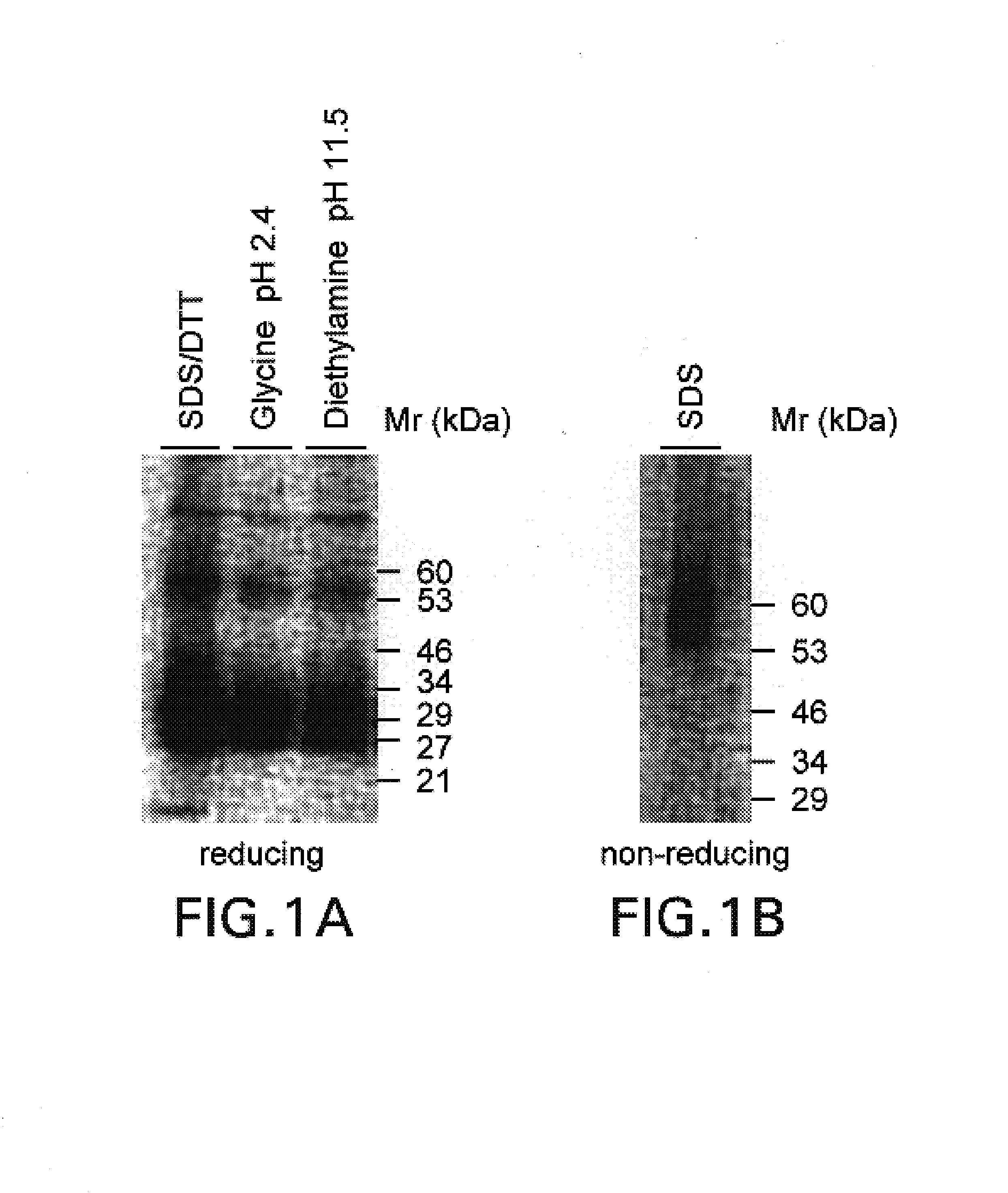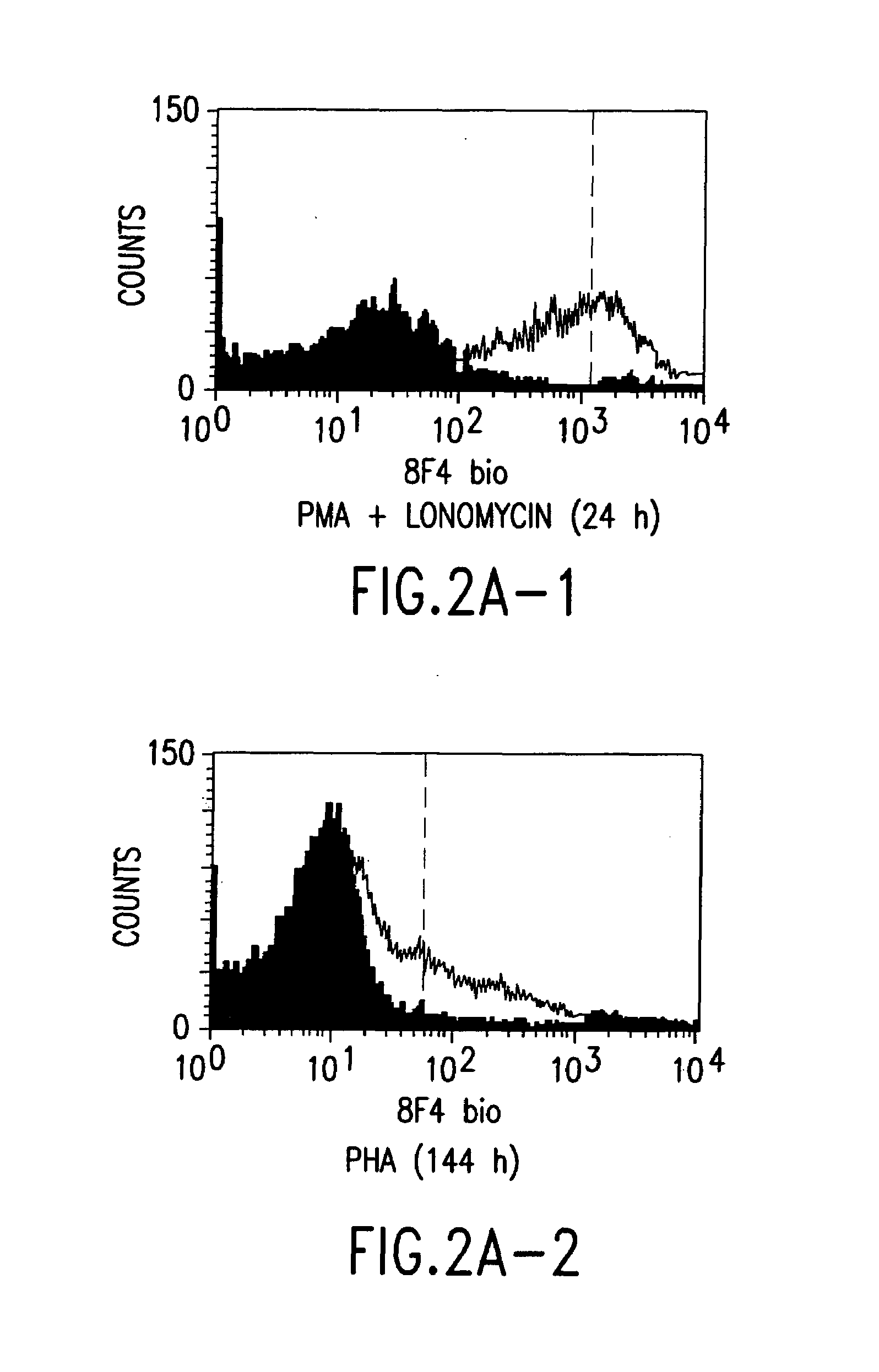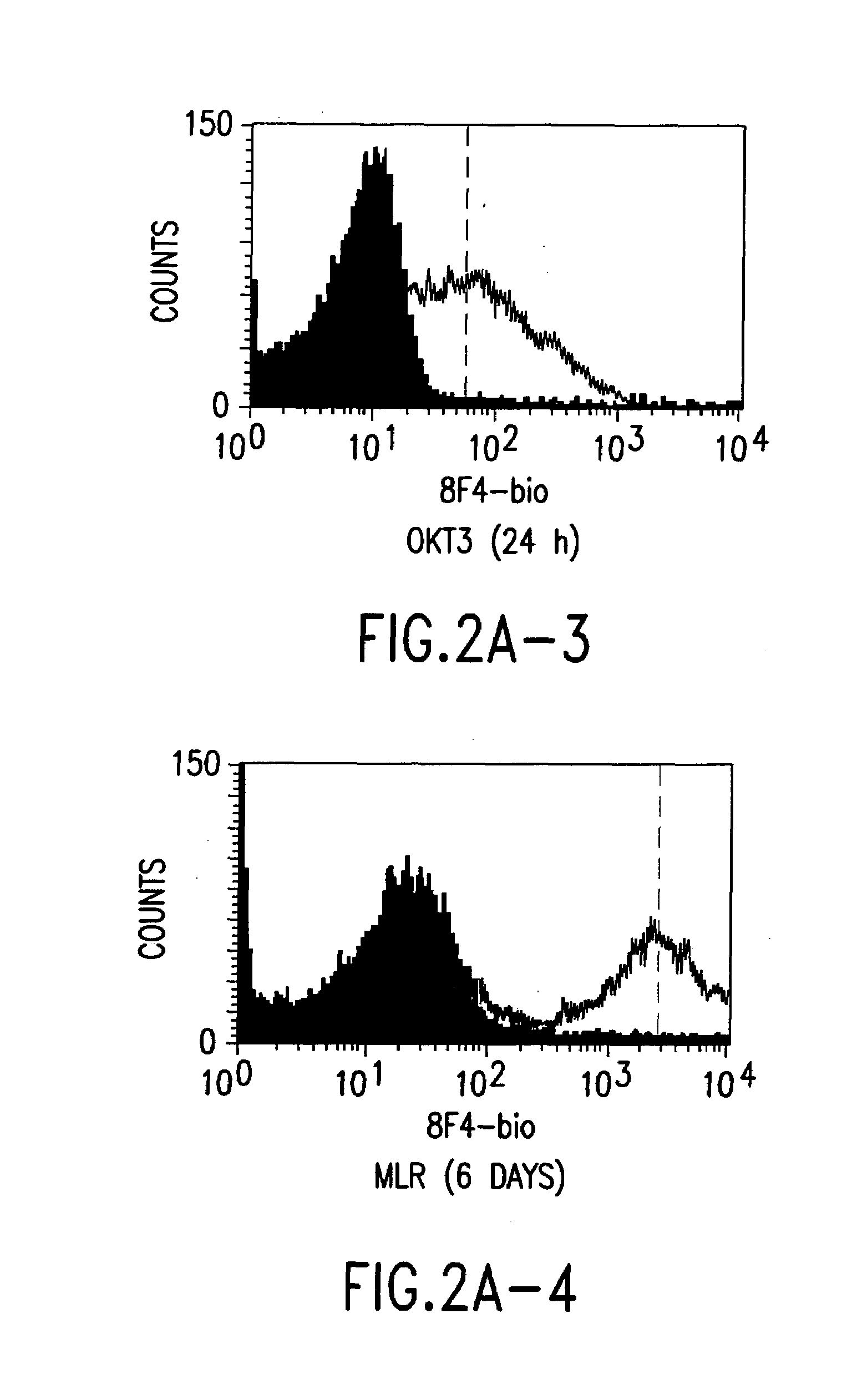Anti-human T-cell costimulating polypeptide monoclonal antibodies
a technology of t-cells and monoclonal antibodies, applied in the field of polypept, can solve the problems of insufficient activation of t lymphocytes, insufficient recognition of antigens by t-cell receptors alone, and insufficient immune respons
- Summary
- Abstract
- Description
- Claims
- Application Information
AI Technical Summary
Benefits of technology
Problems solved by technology
Method used
Image
Examples
example 1
Generation of the 8F4 Antibody
[0052]Balb / c mice were immunized with human T cells which had previously been activated for 24 h with 33 ng / ml of the phorbol ester phorbol myristate acetate (PMA) (Sigma, Deisenhofen) and with 200 ng / ml of the Ca2+ ionophore ionomycin (Sigma, Deisenhofen) (so-called “2-signal activation”). After boosting three times, the spleen cells of the mice were fused with the myeloma P3X63Ag8.653 (ATCC No. CRL-1580), and antibody-secreting hybridomas were generated by standard methods; cf. Peters and Baumgarten, Monoclonal Antibodies, Springer, Heidelberg, 1992. The resulting antibodies were screened for activated versus resting T cells in flow cytometry. Activated (“2-signal activation”) and resting T cells were incubated with the hybridoma supernatant and then labelled with a fluorescence-labelled secondary antibody; cf. Shapiro, Practical Flow Cytometry, Wiley-Liss, New York, 1995. Only the antibodies which recognize molecules which were induced exclusively by...
example 2
Immunoprecipitation of the 8F4 Antigen
[0053]Surface molecules from activated human T cells were iodinated with 125I by standard methods and immunoprecipitated with the antibody 8F4 by standard methods; cf. Goding, Monoclonal Antibodies: Principle and Practice, Academic Press, London, 1996. The antibody for the immunoprecipitation was coupled by the method of Schneider et al., Journal of Biological Chemistry 257 (1982), 10766–10769, to protein G (Pharmacia, Freiburg) (8F4 matrix). The matrix was washed as described by Schneider et al., see above. The immunoprecipitated 8F4 molecule was analysed for its molecular mass in an SDS-PAGE (non-reduced and reduced) in a conventional way; Goding, see above.
example 3
[0054]The 8F4-carrying T cells were analysed in flow cytometry by standard methods; cf. Shapiro, Practical Flow Cytometry, Wiley-Liss, New York, 1995.
PUM
| Property | Measurement | Unit |
|---|---|---|
| molecular weight | aaaaa | aaaaa |
| molecular weights | aaaaa | aaaaa |
| molecular weights | aaaaa | aaaaa |
Abstract
Description
Claims
Application Information
 Login to View More
Login to View More - R&D
- Intellectual Property
- Life Sciences
- Materials
- Tech Scout
- Unparalleled Data Quality
- Higher Quality Content
- 60% Fewer Hallucinations
Browse by: Latest US Patents, China's latest patents, Technical Efficacy Thesaurus, Application Domain, Technology Topic, Popular Technical Reports.
© 2025 PatSnap. All rights reserved.Legal|Privacy policy|Modern Slavery Act Transparency Statement|Sitemap|About US| Contact US: help@patsnap.com



